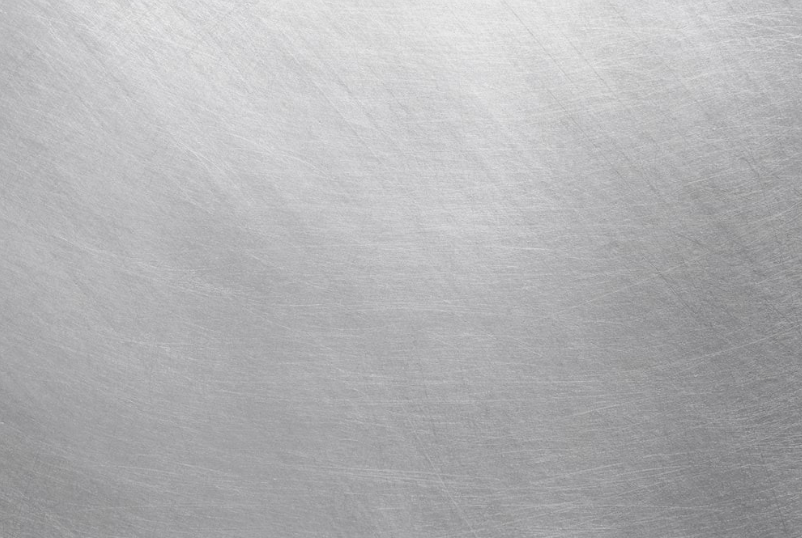During deep drawing, a punch press pushes a sheet metal blank into a die cavity to form a contoured part. A part is said to be deep drawn if its depth is at least half its diameter. Otherwise, it is simply called universal stamping.
Close-up of unwrinkled metal plate
Deep drawing is a widely used process that produces a range of hardware, and the deep drawing process may have one or more drawing operations, depending on the complexity of the part.

Creping and drawing and stamping processes
One of the main defects that occurs during deep drawing operations is wrinkling of the sheet metal material, usually in the walls or flanges of the part. During the stamping process, the blank flange is subjected to radial drawing stress and tangential compressive stress, sometimes wrinkling occurs. Wrinkling can be prevented if the drawing system and stamping are properly designed.
Causes of wrinkling of deep-drawn parts, several factors can cause wrinkles in deep-drawn parts, including:
Blank support pressure
Cavity Depth and Radius
Friction between blank, blankholder, punch and cavity
Clearance between blank, blankholder, punch and cavity
Blank shape and thickness
final part geometry
Punch speed
Other factors, such as die temperature and the metal alloy of the blank, also affect the deep drawing process. Variations in any of these factors can affect the likelihood of wrinkling or cracking in a deep drawn part.
As the name implies, the blank holder holds the edge of the sheet metal blank in place on top of the die while the punch forces the sheet metal into the die cavity – the sheet metal deforms into the correct shape rather than simply being pulled into the die cavity.
However, the blank holder will not hold the edges of the blank securely in place, and if this is the case, tearing of the cup wall may occur. The blank holder allows the blank to slide to some extent by providing friction between the blank holder and the blank itself. Blank support forces can be applied hydraulically with pressure feedback through the use of air or nitrogen gas cushions or CNC hydraulic cushions.
The greater the cavity depth, the more blank material must be drawn into the cavity and the greater the risk of wrinkling of the part walls and flanges. The maximum cavity depth is a balance between wrinkling and fracture initiation, neither of which is desirable.
The radii of the punch and cavity edges control the flow of blank material into the cavity. If the radii of the punch and cavity edge are too large, cup wall wrinkling may occur. If the radius is too small, the blank will tear easily due to high stress.
Ways to prevent wrinkling of deep-drawn parts: use blank holders
The easiest way to eliminate wrinkling of deep drawn parts is to use a blank holder. In most deep drawing processes, constant blank holder pressure is applied throughout the drawing process.
However, variable blank holder pressure has been used with some success, and pneumatic or hydraulic blank holder pads can vary the blank holder pressure linearly according to the stroke of the machine. This provides some increase in allowable cavity depth.
Numerically controlled (NC) die pads can be used to provide variable blank holder pressure during stretching operations, with a higher initial force in a suitable blank holder pressure profile to provide initial deformation.
Cushion pads shed to pull material into the cavity, then ramp back up slowly to ensure strain hardening in the drawn part, NC die pads can significantly increase allowable cavity depth while preventing wrinkling and cracking.
Ways to prevent wrinkling of deep-drawn parts: cavity design
The design of the punch and cavity can be optimized to reduce the probability of wrinkling. Choosing a flange radius that is just large enough to prevent cracking minimizes the chance of wrinkling. Also, it helps to consider minimizing part complexity and any asymmetry. Using a multi-step drawing process has several advantages in preventing wrinkling of deep-drawn parts.
Designing blank geometry to minimize excess material can reduce the possibility of wrinkling. Sheet metal blanks have an inherent grain structure, so stresses can vary depending on the design of the die and the orientation of the grains. The general stresses of the recombination and deep-drawing process, which adjust the grains in an asymmetric design to minimize grain stress, are considerations.
other factors to consider
The surface condition of each component can be customized to improve overall performance. Lubricants reduce friction between the blank and the punch and cavity and can be liquid (wet) or thin film (dry). Typically, they are applied to the stock prior to drawing.
Today, dry films are gaining acceptance as they reduce the need for part cleaning after fabrication, and while lubricants can facilitate metal flow into the cavity, consider increasing the blank clamping force to account for the reduced friction.
Previously, trial and error and operator experience optimized part and mold designs. Today, computer-aided design and finite element modeling are used to create part and die designs and simulate the deep drawing process, significantly reducing tool and labor costs in the design process.






